Pirelli launched its own sealant range in 2022, encompassing its extensive tyre range.
The P Zero sealant on test is designed for road cycling.
I’ve found it to perform very well throughout testing, although the yellow fluid stains if it gets on you.
Pirelli P Zero sealant details
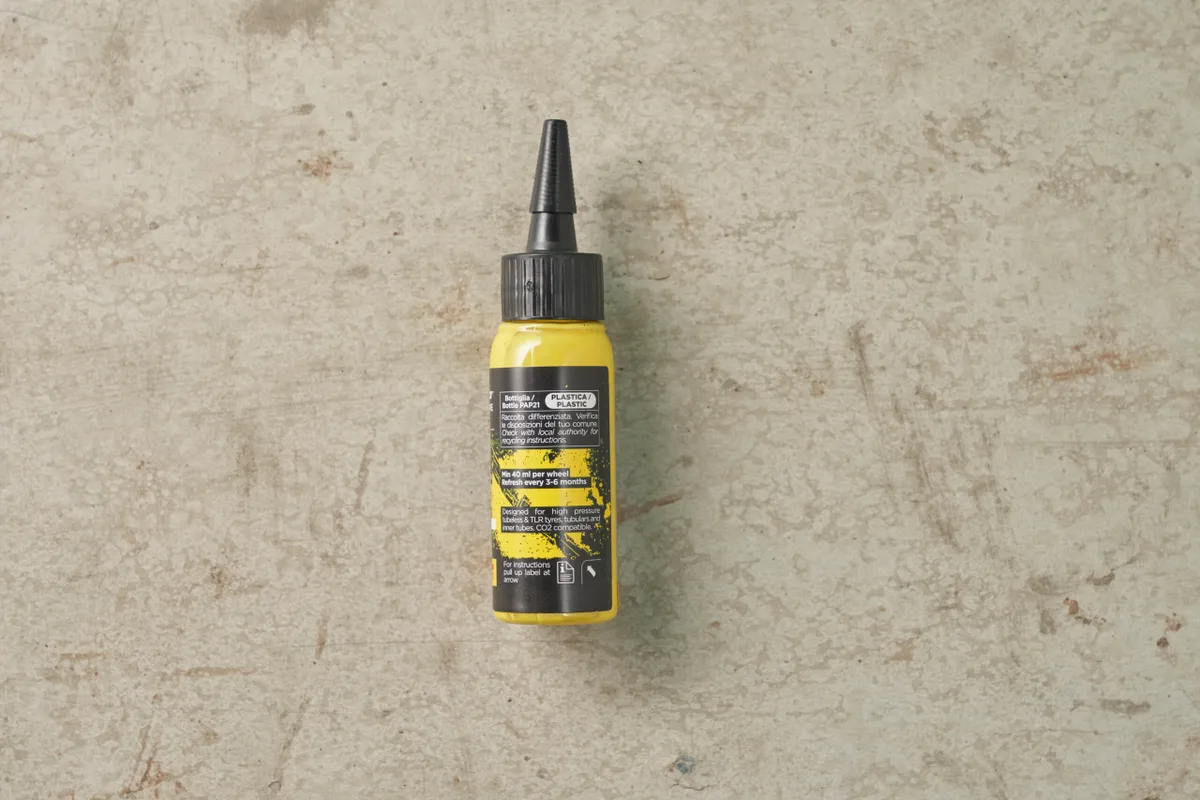
The P Zero sealant uses ammonia, latex and micro-sealing particles, with Pirelli claiming it will not leave a sticky residue in the tyre. The brand also claims it is compatible with CO2 inflators.
Incidentally, the brand’s Cinturato and Scorpion sealants, which complement its other tyre lines, do not use ammonia and are latex-free.
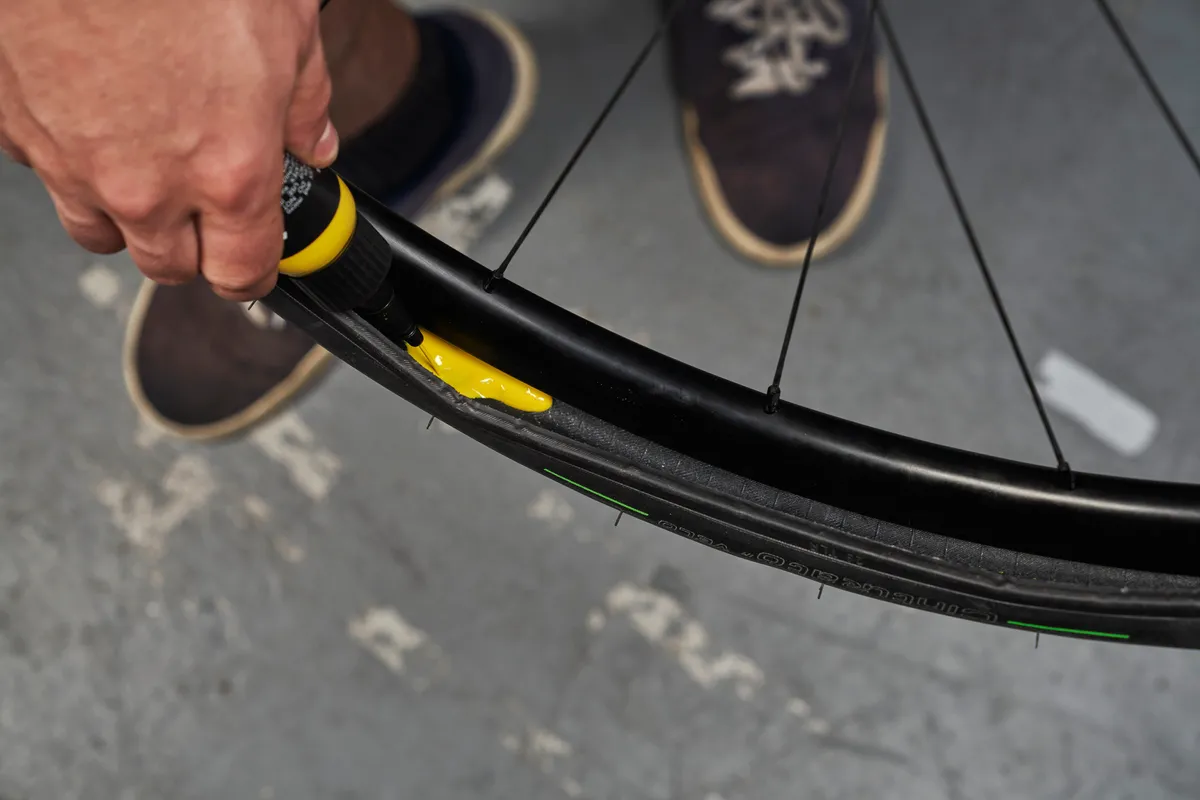
Pirelli says the P Zero sealant, which is yellow in appearance, is designed to work within a temperature range from -20 to 70°C. The brand says it is compatible with road bike tyre pressures up to 130psi / 9 BAR.
The sealant is compatible with all of its road P Zero tyres, as well as the Cinturato Road and Cinturato Velo.
Pirelli says you should top the sealant up every three to six months and it’s only available in a 125ml bottle.
Pirelli P Zero sealant performance
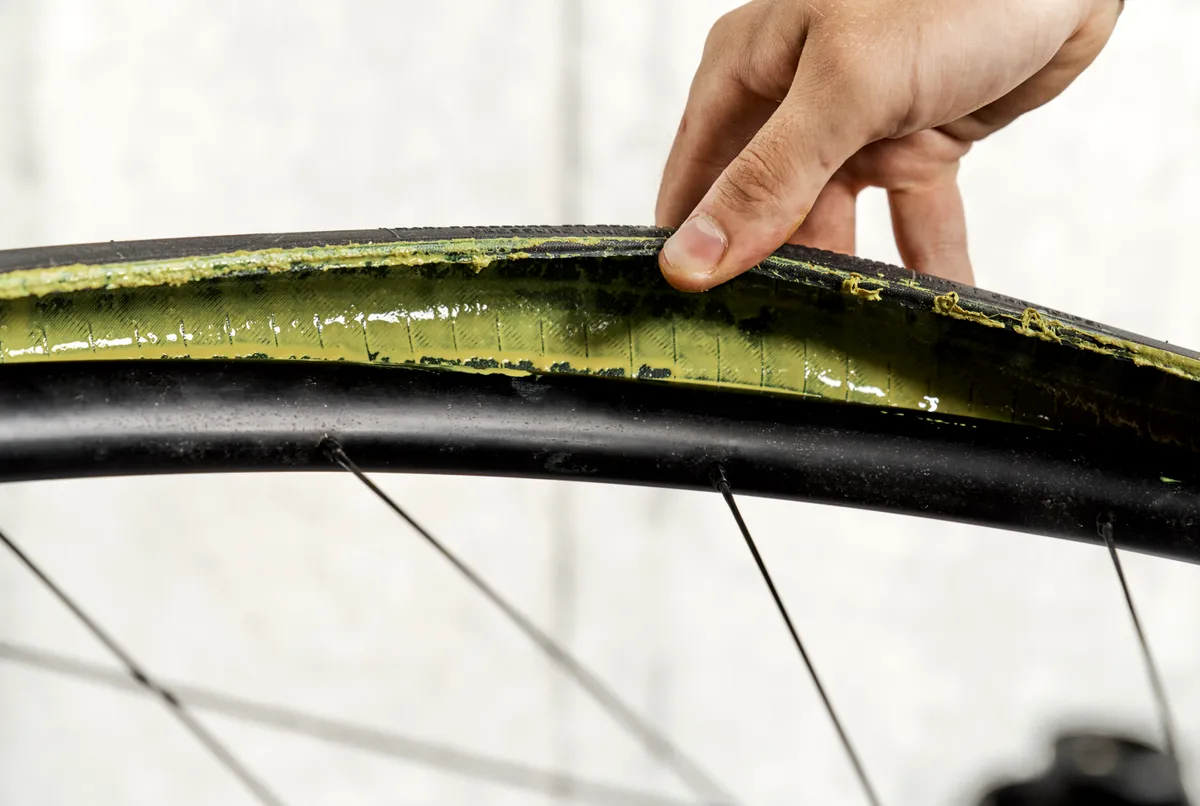
I’ve been testing the P Zero sealant with a Pirelli Cinturato Velo tyre on a pair of Hunt Alloy SL wheels for just over a year.
Installation proved relatively straightforward, although sealant leaked out of the joins of both rims. Once shaken to coat the sealant everywhere, I didn’t experience any problems.
I would put this issue down to the tyre and rim combination, rather than the sealant.
I also used the sealant when setting up a Vittoria Zaffiro Pro V G2.0 tubeless tyre on a DT Swiss Endurance LN wheel, which proved straightforward.
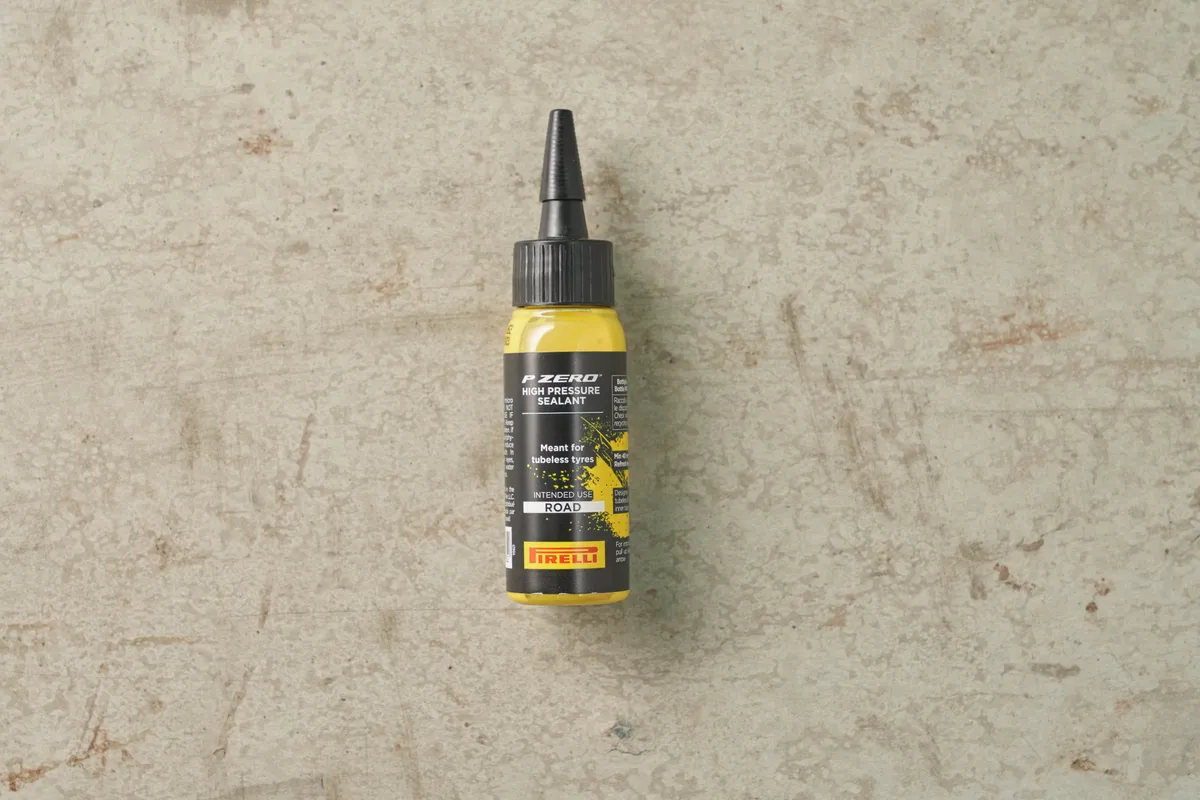
I haven’t experienced any punctures in my testing and can’t see any evidence of cuts on the inside or outside of the tyre. As I detailed in my review, the Cinturato Velo is a particularly hardy tyre, so that will have had a great bearing on the result.
When I first topped the sealant up three months later, I couldn’t detect any notable loss.
I was rather lazy with my second sealant top-up and was impressed there was still plenty of sealant in the tyre eight months later. Some had congealed inside, but true to Pirelli’s word, it was easy to clean away.
The applicator on the bottle makes it easy to add or top up sealant.
The only real negative is the P Zero sealant is very difficult to clean if it spills. I was unlucky to get some on my trousers, and it has left a lasting stain.
I wouldn’t be overly impressed if sealant sprayed at some of my more expensive riding kit when out on a ride.
How does Pirelli P Zero sealant compare to rivals?

I put the P Zero sealant to the same protocol as workshop manager Will Poole during his test of some of the best tubeless sealants last year.
This involved installing a new donor 28mm tyre onto a rim and inflating it to 80psi. I then poked five holes around the tyre with a drawing pin, making sure to stab it in a mixture of central and offset locations.
All of these holes were sealed with ease and the tyre dropped just 4psi / 0.27 BAR.
I then reinflated the tyre and stabbed a further five holes with a utility pick. Again, these all sealed, with the tyre dropping to 60psi.
The tyre also resisted an identical attack with a PH3 screwdriver, also dropping to 60psi / 4.14 BAR.
The tyre failed on the third incision I made with a Stanley blade, which was approximately 8mm. That’s an admirable performance, and you’d have to be very unlucky to ride over a blade to sustain such a hole.
It’s in line with the Effetto Mariposa Caffélatex and Silca Ultimate Tubeless sealant in Will Poole’s test, but not quite to the same level as Stan’s No Tubes Race sealant.
Pirelli P Zero sealant bottom line
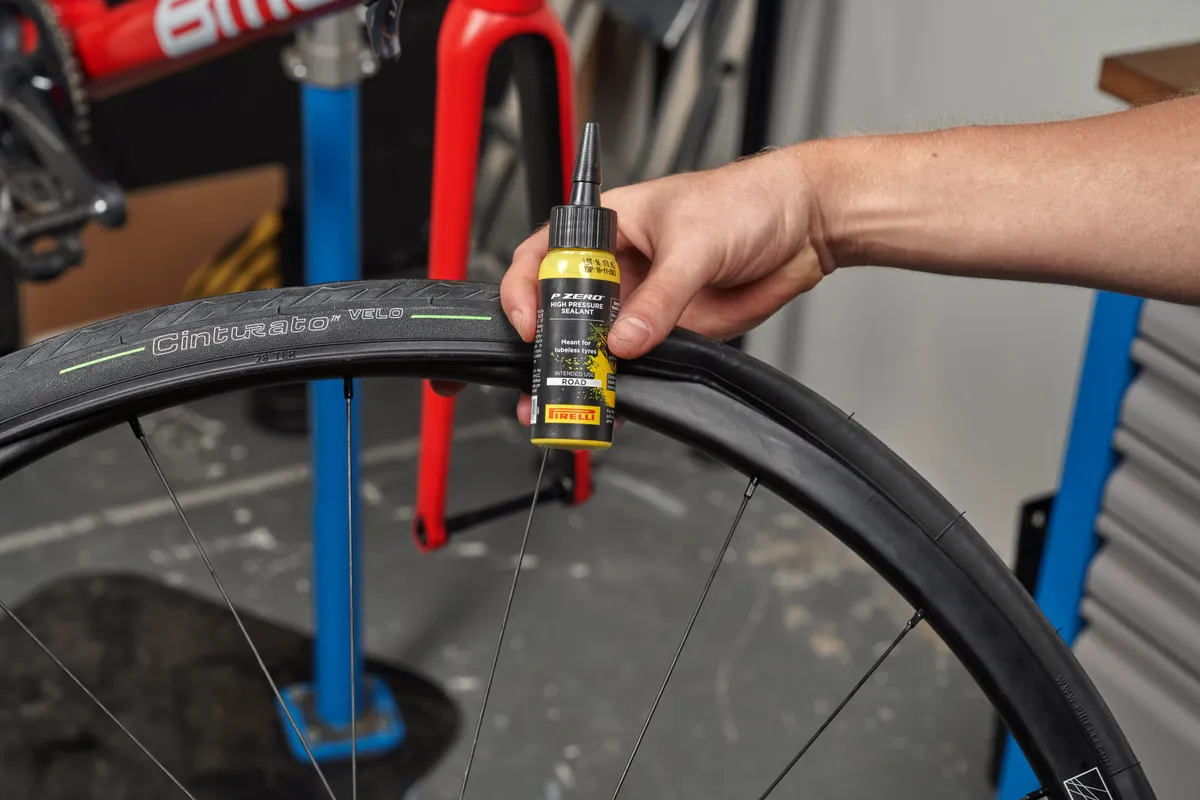
Pirelli has done a commendable job with its debut road bike tyre sealant. It’s proven reliable over the year-long test period and performed excellently in the stab test.
My preferred products to date are Muc-Off’s No Puncture and Stan's No Tubes tubeless sealants. These, alongside the Pirelli P Zero, seem to perform as well as each other.
What tips the edge to the first two of those three products is they're easier to clean if they spill – I would much rather opt for a solution that doesn’t stain clothes.
Product
| Brand | pirelli |
| Price | 15.90 AUD,7.90 EUR,7.99 GBP,10.90 USD |
